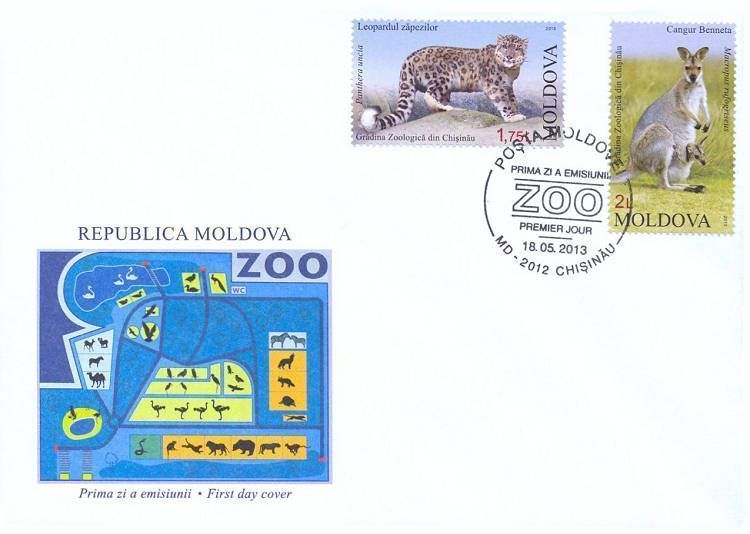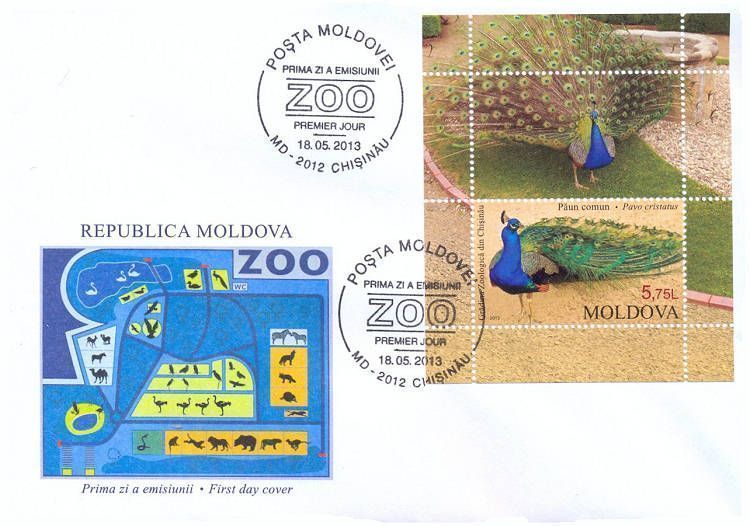POSTAGE STAMPS
|
|
Snow Leopard
- Michel Catalogue No: 831
- Perforation Type/Size: Comb 14.50:14
- Size: 46.00 x 27.50 mm
- Face Value: 1.75 Lei
- Quantity Printed: 100,000
|
The snow leopard (Panthera uncia or Uncia uncia) is a moderately large cat native to the mountain ranges of Central Asia. The classification of this species has been subject to change, and as of 2000, it is still classified as Uncia uncia by MSW3. and CITES Appendix I. However, with more recent genetic studies, the snow leopard is now generally considered as Panthera uncia and classified as such by IUCN. Classically, two subspecies have been attributed, but genetic differences between the two have not been settled. The snow leopard is listed on the IUCN Red List of Threatened Species as globally Endangered (EN). Snow leopards are National Heritage Animal of Pakistan. Read more..
This article uses material from the Wikipedia article 'Snow_leopard', which is released under the Creative Commons Attribution-Share-Alike License 3.0. |
| |
|
Red-Necked or Bennetts Wallaby
- Michel Catalogue No: 832
- Perforation Type/Size: Comb 14:14.50
- Size: 27.50 x 46.00 mm
- Face Value: 2 Lei
- Quantity Printed: 75,000
|
The red-necked wallaby (Macropus rufogriseus) is a medium-sized macropod marsupial (wallaby), common in the more temperate and fertile parts of eastern Australia, including Tasmania. Read more..
This article uses material from the Wikipedia article 'Red-necked_wallaby', which is released under the Creative Commons Attribution-Share-Alike License 3.0. |
| |
|
Indian Peacock
- Michel Catalogue No: 833
- Perforation Type/Size: Comb 14.50:14
- Size: 46.00 x 27.50 mm
- Face Value: 5.75 Lei
- Quantity Printed: 25,000
|
The Indian Peafowl or Blue Peafowl (Pavo cristatus) is a large and brightly coloured bird of the pheasant family native to South Asia, but introduced and semi-feral in many other parts of the world. The species was first named and described by Linnaeus in 1758. The name Pavo cristatus is still in use now. The male peacock is predominantly blue with a fan-like crest of spatula-tipped wire-like feathers and is best known for the long train made up of elongated upper-tail covert feathers which bear colourful eyespots. These stiff and elongated feathers are raised into a fan and quivered in a display during courtship. The female lacks the train, has a greenish lower neck and a duller brown plumage. The Indian Peafowl is found mainly on the ground in open forest or on land under cultivation where they forage for berries, grains but will also prey on snakes, lizards, and small rodents. Their loud calls make them easy to detect, and in forest areas often indicate the presence of a predator such as a tiger. They forage on the ground in small groups and will usually try to escape on foot through undergrowth and avoid flying, though they will fly into tall trees to roost. The bird is celebrated in Indian and Greek mythology and is the national bird of India. The Indian Peafowl is listed as of Least Concern by the International Union for Conservation of Nature (IUCN). Read more..
This article uses material from the Wikipedia article 'Indian_Peafowl', which is released under the Creative Commons Attribution-Share-Alike License 3.0. |
| |






No comments:
Post a Comment